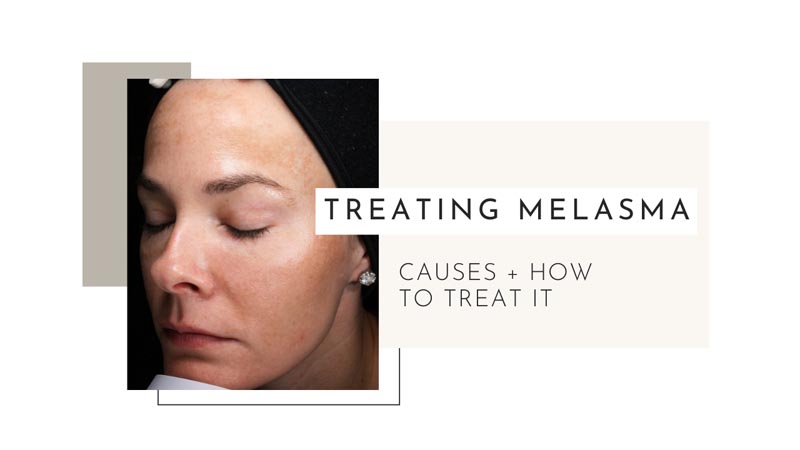Hyperpigmentation, melasma, and vitiligo are three common skin conditions that affect individuals of all ages and backgrounds. Understanding these conditions is crucial for both those who suffer from them and those who interact with individuals experiencing these skin issues. As a professional author, I have delved into the depths of these conditions to provide you with a comprehensive guide on their causes, symptoms, treatment options, and management strategies. By shedding light on these topics, we can foster empathy and knowledge, ultimately leading to a more inclusive and understanding society.
Understanding Hyperpigmentation: Causes and Symptoms
Hyperpigmentation refers to the darkening of certain areas of the skin due to an excess production of melanin, the pigment responsible for skin color. This condition can be caused by various factors such as sun exposure, hormonal changes, inflammation, and skin injuries. Personally, I have experienced hyperpigmentation after spending long hours under the scorching sun during a beach vacation. The aftermath was not only a painful sunburn but also unsightly dark patches on my face.
Symptoms of hyperpigmentation include the appearance of dark spots or patches on the skin that are usually darker than the surrounding areas. These spots can vary in size and shape, and they may be more prominent in individuals with darker skin tones. It is important to note that hyperpigmentation is a harmless condition but can cause significant distress and self-esteem issues for those affected.
Melasma: What is it and How to Treat it?
Melasma is a specific type of hyperpigmentation that primarily affects women, especially during pregnancy or when using hormonal contraceptives. It manifests as brown or grayish patches on the face, particularly on the cheeks, forehead, nose, and upper lip. The hormonal changes associated with pregnancy triggered melasma in my case, leaving me feeling self-conscious about my appearance.

The exact cause of melasma is not fully understood, but it is believed to be influenced by hormonal fluctuations, sun exposure, and genetic predisposition. Treatment options for melasma include topical creams containing ingredients like hydroquinone, retinoids, and corticosteroids. Additionally, procedures such as chemical peels, microdermabrasion, and laser therapy can be effective in reducing the appearance of melasma. However, it is important to consult with a dermatologist before embarking on any treatment plan.
Vitiligo: Causes, Symptoms, and Treatment Options
Vitiligo is a skin condition characterized by the loss of melanocytes, resulting in depigmented patches on the skin. These patches can appear anywhere on the body and may gradually increase in size over time. Personally, I have a close friend who has vitiligo, and witnessing her journey has given me a deeper understanding of the challenges faced by individuals with this condition.
The exact cause of vitiligo is still unknown, but it is believed to be an autoimmune disorder where the body’s immune system mistakenly attacks and destroys melanocytes. Other factors such as genetic predisposition and environmental triggers may also play a role. Treatment options for vitiligo include topical corticosteroids, calcineurin inhibitors, and phototherapy. In severe cases, surgical procedures like skin grafting or tattooing can be considered to restore pigmentation.
Hyperpigmentation: Types and Diagnosis
Hyperpigmentation can manifest in various forms, each with its own distinct characteristics. Some common types of hyperpigmentation include post-inflammatory hyperpigmentation (PIH), age spots or liver spots, and freckles. Personally, I have struggled with PIH after experiencing acne breakouts during my teenage years.
Diagnosing hyperpigmentation typically involves a visual examination by a dermatologist or healthcare professional. They may also use a Wood’s lamp or perform a skin biopsy to confirm the diagnosis. It is important to seek professional help for an accurate diagnosis, as some skin conditions may mimic hyperpigmentation but require different treatment approaches.
The Connection Between Melasma and Hormonal Changes
Hormonal changes, such as those occurring during pregnancy or while taking hormonal contraceptives, can trigger or worsen melasma. This phenomenon is often referred to as “the mask of pregnancy.” Personally, I experienced melasma during my first pregnancy, and it was a constant reminder of the incredible changes happening within my body.
Managing melasma during hormonal changes can be challenging, but there are strategies that can help minimize its impact. Firstly, it is crucial to protect the skin from sun exposure by wearing sunscreen with a high SPF and seeking shade whenever possible. Additionally, using gentle skincare products and avoiding harsh chemicals can help prevent further irritation and pigmentation. Consulting with a dermatologist is essential to develop a personalized treatment plan that takes into account hormonal fluctuations and individual needs.
Vitiligo: Myths and Facts
Vitiligo is often surrounded by misconceptions and myths that can perpetuate stigma and misunderstanding. One common myth is that vitiligo is contagious, leading to social isolation for those affected. However, it is important to understand that vitiligo is not contagious and cannot be transmitted through physical contact or proximity.
Facts about vitiligo include its prevalence in approximately 1% of the global population, affecting people of all races and ethnicities. It is a chronic condition with no known cure, but various treatment options are available to manage its symptoms. By dispelling myths and spreading accurate information about vitiligo, we can create a more inclusive society that embraces diversity in all its forms.
Hyperpigmentation: Prevention and Management
Preventing hyperpigmentation involves adopting healthy skincare practices and minimizing exposure to known triggers. Firstly, protecting the skin from harmful UV rays by wearing sunscreen and seeking shade is crucial. Additionally, avoiding picking or scratching at the skin can prevent post-inflammatory hyperpigmentation. Personally, I have learned the hard way that picking at acne or scabs only exacerbates the problem and leads to prolonged pigmentation.
Management options for hyperpigmentation include using topical creams containing ingredients like hydroquinone, retinoids, and kojic acid. These ingredients work by inhibiting melanin production and promoting skin cell turnover. In-office procedures such as chemical peels, microdermabrasion, and laser therapy can also be effective in reducing hyperpigmentation. However, it is important to consult with a dermatologist to determine the most suitable treatment plan for individual needs.
ALSO READ: The Truth About Skin Lightening Products: A Consumer’s Guide
Melasma and Sun Exposure: How to Protect Your Skin
Sun exposure is a major trigger for melasma and can worsen existing pigmentation. The harmful UV rays from the sun stimulate melanocytes, leading to increased melanin production and darkening of melasma patches. Personally, I have learned the importance of sun protection the hard way, as my melasma became more pronounced after spending long hours under the sun without proper protection.
To protect your skin from sun exposure, it is essential to wear sunscreen with a high SPF, preferably broad-spectrum to shield against both UVA and UVB rays. Reapplying sunscreen every two hours, especially when outdoors or engaging in water activities, is crucial for optimal protection. Wearing wide-brimmed hats, sunglasses, and protective clothing can also provide additional defense against harmful UV rays.
Vitiligo and Autoimmune Disorders: What You Need to Know
Vitiligo has been linked to autoimmune disorders, where the body’s immune system mistakenly attacks its own cells and tissues. This association highlights the complex nature of vitiligo and its underlying mechanisms. Personally, witnessing my friend’s journey with vitiligo has made me aware of the potential impact of autoimmune disorders on the skin.

If you have an autoimmune disorder, it is important to manage both the underlying condition and vitiligo simultaneously. This may involve working closely with healthcare professionals, such as dermatologists and rheumatologists, to develop a comprehensive treatment plan. Additionally, adopting a healthy lifestyle, including stress management techniques and a balanced diet, can support overall well-being and potentially minimize the progression of vitiligo.
Hyperpigmentation and Ethnic Skin: Unique Challenges and Solutions
Individuals with ethnic skin often face unique challenges when dealing with hyperpigmentation. Darker skin tones are more prone to developing post-inflammatory hyperpigmentation after skin injuries or inflammation. Personally, as someone with olive-toned skin, I have noticed that even minor cuts or insect bites can leave behind stubborn dark marks that take longer to fade.
Solutions for managing hyperpigmentation in ethnic skin include using skincare products specifically formulated for darker skin tones. These products often contain ingredients like niacinamide, vitamin C, and licorice extract, which can help even out skin tone and reduce pigmentation. It is important to consult with a dermatologist who specializes in treating ethnic skin to ensure the most effective and safe treatment options are utilized.
Melasma: Topical Treatments and Procedures
Topical treatments play a significant role in managing melasma by reducing pigmentation and promoting skin cell turnover. Hydroquinone is a commonly used ingredient that inhibits melanin production. However, it is important to use hydroquinone under the guidance of a dermatologist due to potential side effects such as skin irritation and rebound pigmentation. Meladerm.
Other topical treatments for melasma include retinoids, which help exfoliate the skin and promote cell turnover, and corticosteroids, which reduce inflammation and pigmentation. In-office procedures like chemical peels, microdermabrasion, and laser therapy can also be effective in treating melasma. However, it is crucial to consult with a dermatologist to determine the most suitable treatment plan based on individual needs and skin type.
Vitiligo: Coping with Emotional and Psychological Effects
Vitiligo can have a profound impact on a person’s emotional and psychological well-being. The visible nature of the condition can lead to feelings of self-consciousness, low self-esteem, and even depression. Personally, I have witnessed my friend’s struggle with the emotional toll that vitiligo can take.
Coping strategies for dealing with the emotional and psychological effects of vitiligo include seeking support from loved ones, joining support groups or online communities, and engaging in activities that boost self-confidence. It is important to remember that vitiligo does not define a person’s worth or beauty. Embracing one’s uniqueness and focusing on inner qualities can help navigate the emotional challenges associated with vitiligo.
Hyperpigmentation and Aging: How to Maintain a Youthful Appearance
Hyperpigmentation can significantly impact the appearance of aging skin, making it appear dull, uneven, and aged. Personally, as I entered my thirties, I noticed an increase in hyperpigmentation on my face, which made me feel like my skin was prematurely aging.

To maintain a youthful appearance despite hyperpigmentation, it is important to establish a consistent skincare routine that includes gentle cleansing, exfoliation, and moisturization. Using products containing ingredients like vitamin C, niacinamide, and retinoids can help fade pigmentation and promote collagen production for smoother and more youthful-looking skin. Additionally, protecting the skin from sun exposure through sunscreen usage and seeking shade is crucial for preventing further pigmentation and premature aging.
In conclusion, hyperpigmentation, melasma, and vitiligo are complex skin conditions that require understanding and empathy from both individuals experiencing them and society as a whole. By delving into the causes, symptoms, treatment options, and management strategies for these conditions, we can foster a more inclusive and knowledgeable environment. Seeking professional help from dermatologists and healthcare professionals is crucial for accurate diagnosis and personalized treatment plans. Together, we can create a society that embraces diversity and supports individuals with these skin conditions on their journey towards self-acceptance and well-being.